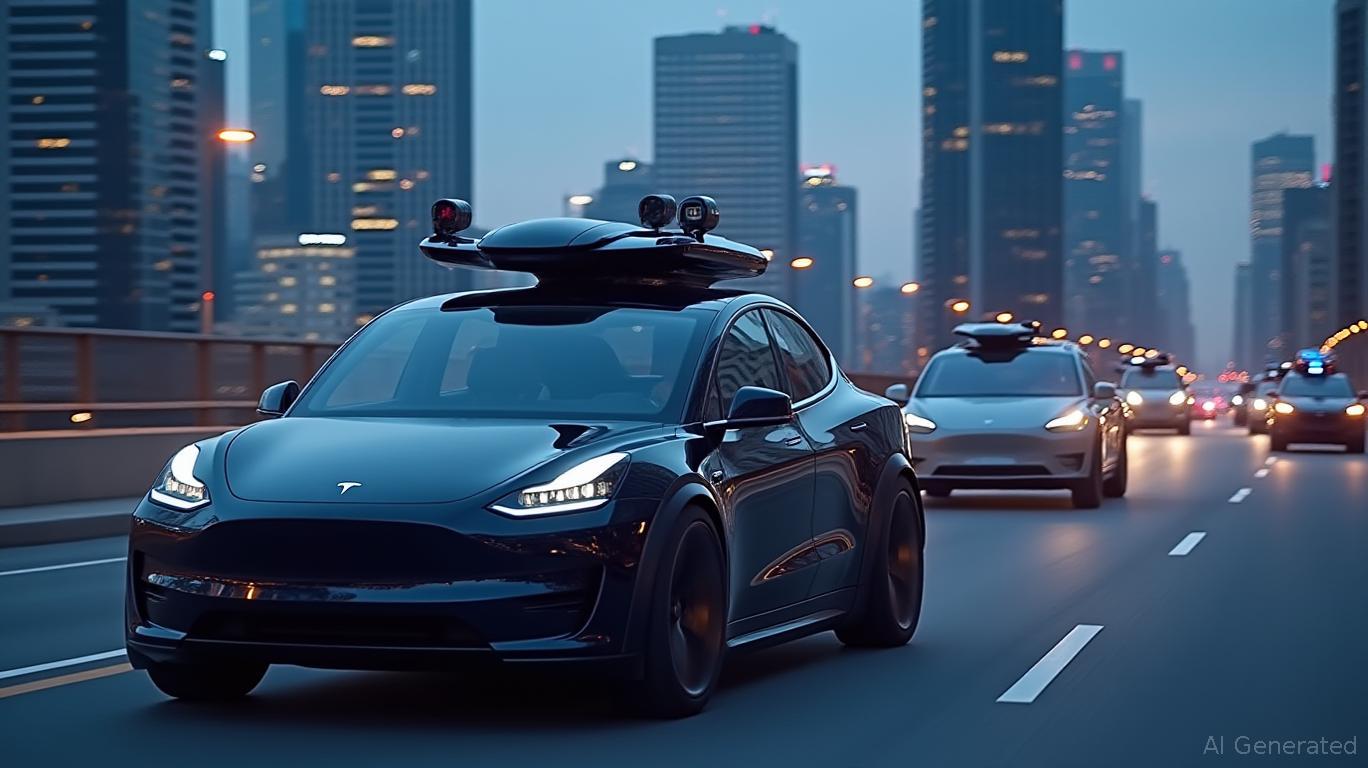Tesla's Robotaxi Rollout: Navigating Volatility in a Geopolitical Crossfire
The world is bracing for turbulence. Geopolitical tensions between Israel and Iran threaten to disrupt global oil markets, while the Federal Reserve's uncertain policy path looms over equities. Amid this uncertainty, investors are searching for growth catalysts that can weather volatility. Tesla's upcoming Robotaxi launch in Austin, Texas—slated for June 22—offers a compelling opportunity to balance near-term risks with long-term gains. Let's dissect how Tesla's autonomous ambitions could offset geopolitical and macroeconomic headwinds, and why investors should consider strategic exposure to this transformative sector.

The Near-Term Volatility: Regulatory Hurdles and Safety Scrutiny
Tesla's Robotaxi rollout is not without obstacles. Texas lawmakers have pressured a delay until September 2025, citing new state regulations requiring compliance with traffic laws, safety certifications, and a “First Responder Interaction Plan.” Meanwhile, safety concerns persist: recent tests by The Dawn Project revealed Tesla's Full Self-Driving (FSD) system failed to stop for a school bus eight consecutive times, sparking NHTSA investigations.
Ask Aime: How will Tesla's new robotaxi launch affect the stock price?
These risks could amplify short-term volatility. A delayed launch or adverse regulatory findings might pressure Tesla's stock (
The Geopolitical Hedge: Autonomous Tech vs. Energy Market Volatility
Israel-Iran tensions have already sent oil prices to $85/barrel, with further escalation risking a spike to $100+. This volatility could weigh on energy stocks and inflation-sensitive sectors.
, however, operates in a low-correlation universe. Its Robotaxi service targets a $1.5 trillion autonomous mobility market by 2030 (), which remains insulated from oil price swings.Moreover, Tesla's software-driven model—leveraging its vast data trove from existing EVs—positions it as a leader in a sector where geopolitical conflicts may accelerate the shift to electrification. “Autonomous tech is a geopolitical stabilizer,” notes analyst Dan Ives of Wedbush. “Tesla's scale and data advantage could turn this volatility into a buying opportunity.”
Fed Policy Uncertainty: A Double-Edged Sword
The Fed's June rate hike and hawkish tone have clouded the outlook for growth stocks. Tesla's 7.8x price-to-sales ratio assumes rapid Robotaxi adoption—a high bar. Yet, autonomous tech's long-term potential could outpace macro headwinds. “Autonomous driving isn't just a Tesla story—it's a secular shift,” says Ives. “Even with Fed uncertainty, the market cap upside here is binary: success could double Tesla's valuation to $2 trillion by 2026.”
Investors should weigh near-term risks against this trajectory. While FSD's technical flaws (e.g., lidar-free sensors vs. Waymo's advanced systems) could delay mass adoption, Tesla's first-mover advantage in consumer EVs gives it an edge. The company's existing fleet of 3 million vehicles can be retrofitted into Robotaxis, a cost-efficient moat competitors lack.
Strategic Investment Playbook: Go Long on Tesla, Hedge with Energy ETFs
1. Buy Tesla for Long-Term Growth:
Allocate 5-7% of a portfolio to Tesla stock, focusing on dips below $200. The Robotaxi's success hinges on proving FSD's safety by September 2025—watch for regulatory approvals and incident rates closely.
2. Hedge with Inverse Oil ETFs:
Pair Tesla exposure with short positions in energy ETFs (e.g., U.S. Oil Fund (USO)) to offset geopolitical-driven oil spikes. For every $10/barrel rise in oil, Tesla's EV margins improve, but energy stocks suffer—a natural hedge.
3. Diversify into Autonomous Tech:
Add exposure to Waymo (Alphabet's GOOGL) or lidar leaders like Luminar (LAZR) for balanced growth. These companies offer complementary bets on the autonomous future, reducing Tesla-specific risk.
Conclusion: Volatility Today, Value Tomorrow
Tesla's Robotaxi launch is a high-stakes gamble, but one with asymmetric upside. While near-term risks—including regulatory pushback and FSD reliability—could shake the stock, the long-term prize—a $1.5 trillion market—is too vast to ignore. For investors willing to endure short-term turbulence, Tesla's autonomous ambitions could be the key to outperforming in a world of geopolitical and Fed-driven uncertainty.
Investment Advice:
- Aggressive Investors: Buy TSLA at $200-$220, target $250 by year-end.
- Conservative Investors: Use options (e.g., long-dated calls) to bet on upside while limiting downside.
- Hedgers: Pair TSLA with short positions in energy ETFs to neutralize oil price risks.
Tesla's Robotaxi isn't just a product launch—it's a bet on the future of transportation. In a volatile world, that future is worth building a portfolio around.

Comments
No comments yet